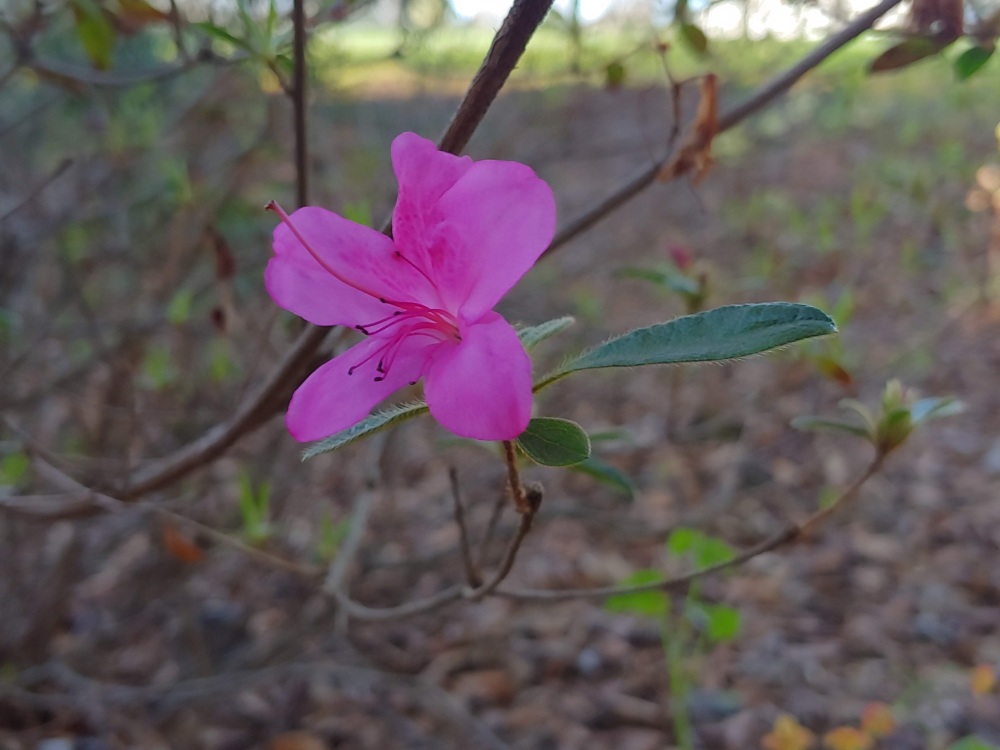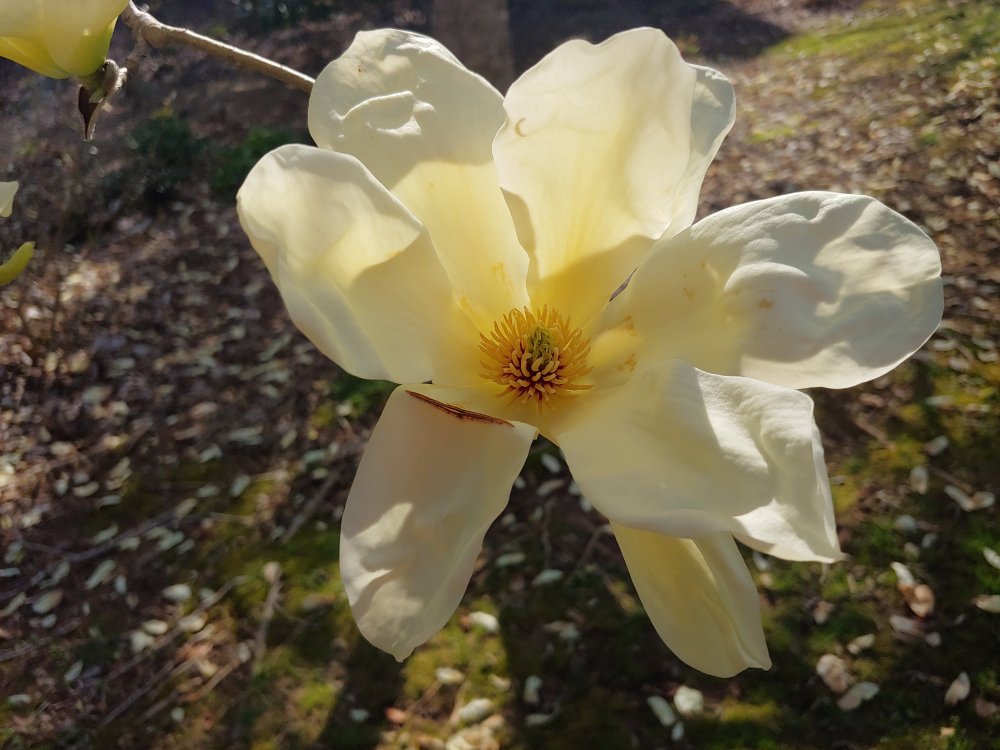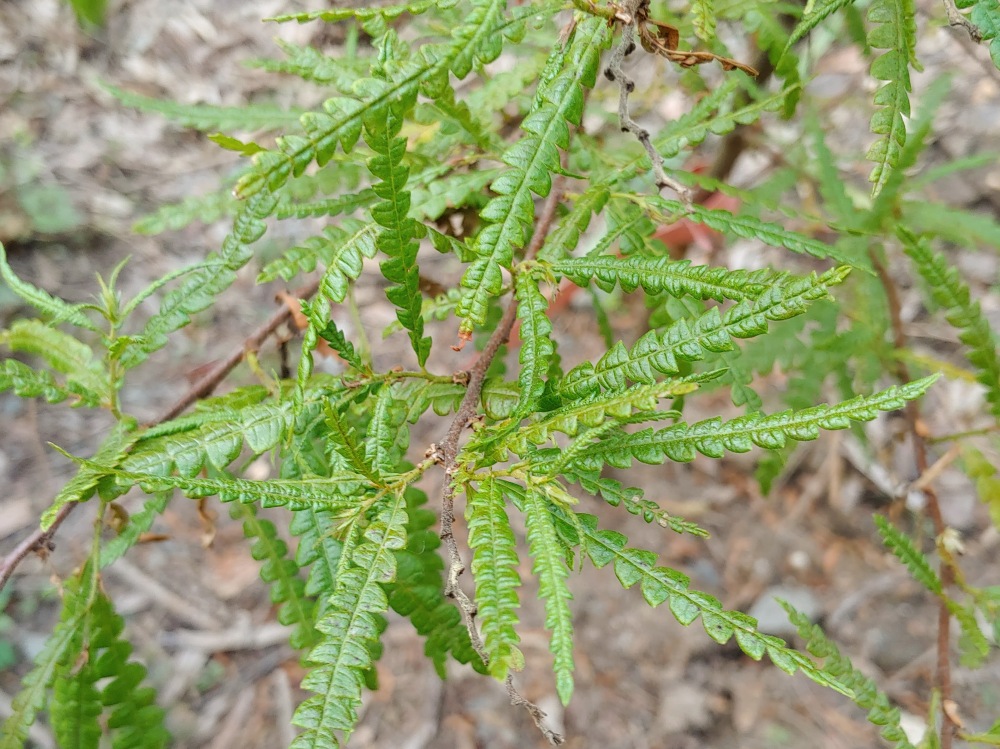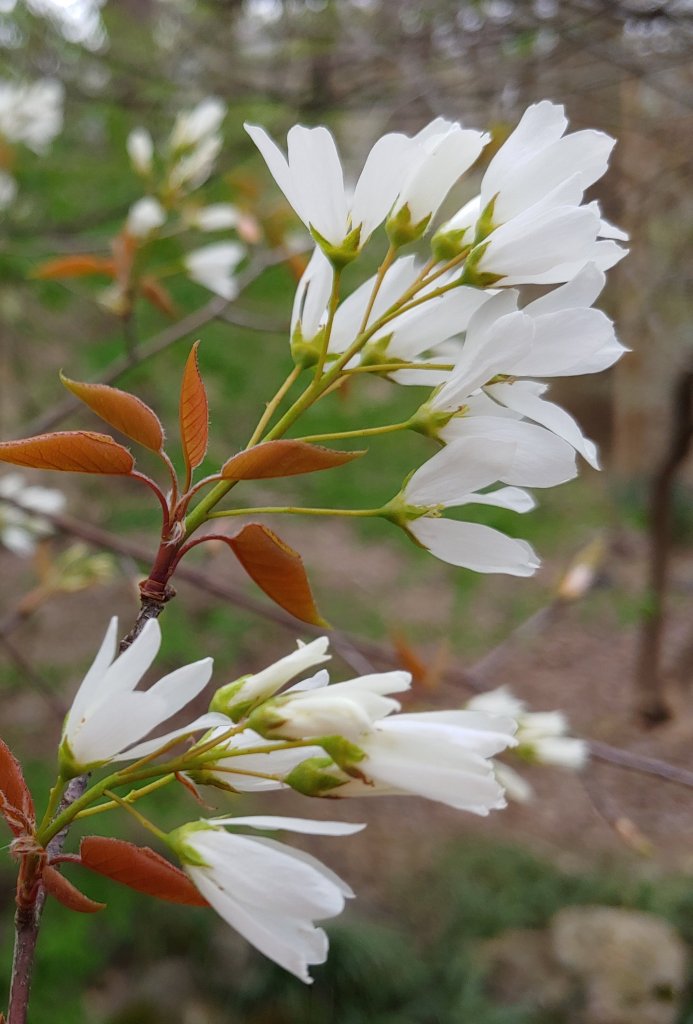Encore azalea ‘Autumn Amethyst’ (below) is an unusual sort, at least at my place. While Encore azaleas typically begin their autumn blooming season as early as August, with heaviest flowering in September and October, ‘Amethyst’ often begins this cycle late in October or November. And, it’s the only azalea that I’ve experienced with a few scattered flowers in a mild December (mild in December is relative, it’s still cold).

With flower buds that are evidently prone to opening in colder than average azalea flowering temperatures, it’s not too surprising to see a few scattered flowers the last few days of March, a month earlier than it typically blooms. I don’t expect more than a few flowers until a month from now, but this is why the gardener peers closely every day instead of catching the highlights less often.
The Last Magnolia
With mild March temperatures, flowers of the three early blooming magnolias (‘Merrill’, ‘Royal Star’, and ‘Jane’) have overlapped, which is unusual, but it occurs at least once every five years, so it’s not rare. But, we’ve gone over that recently, and what was missing was the latest of the early bloomers, the pale yellow flowered ‘Elizabeth’. She is just coming into bloom, and I think the flowers are a bit less pale this spring. Probably, this was just my failing eyesight, or possibly the time of day, but the flowers are yellower. Often, I think ‘Elizabeth’ can hardly be considered yellow, but more a creamy white, but today it’s really yellow. Light yellow.

‘Elizabeth’ is a tall grower, and standing prominently close to the street in front of the house the flowers put on quite a show. I not certain that ‘Elizabeth’ is the best of the yellow flowered magnolias, but it’s the one I have, and it’s a marvelous tree.
The third time
Sweetfern (Comptonia peregrina) is not a fern, but a woody shrub fern lookalike, and I suspect most folks think it’s nothing special to see. Except me. I saw a spreading planting of it a few years back, and I’ve been determined to have one, even after two failures that were most likely due to not finding the right spot (and my typical neglect).

The most recent planting was in late autumn, and now that the sweetfern is leafing on its woody stems I am confident this try will be successful. The second planting also survived a winter and spring, but failed in poor, dry ground in summer’s heat. This planting is shaded from the late afternoon summer sun, so I should be able to proudly show off this fern lookalike that no one else will be excited about.
No fruit
A serviceberry (Amelanchier) thrives at the forest’s edge. Tall branches arch over a stone path with abundant clusters of white blooms in early spring. This is an ideal native complement to redbuds and dogwoods that stand at the forest’s edge. Serviceberry is included in lists of trees with edible fruits, and I would be happy to sample these, except this tree has never had a single fruit. Perhaps it is too shaded so that bees do not pollinate the flowers. In any case, serviceberry is a fine tree, perfectly suited to the forest’s edge.

Our azaleas have come and gone. I do wish they tarried longer.
In northern Virginia late April is the typical period for the earliest azalea blooms.
Comptonia peregrina looks like Lyonothamnus floribundus ‘Asplenifolius’. I know that is a long name, but there are too many common names to list. I do not recognize it, but can see that it is instead related to wax myrtle.
Of course, we don’t have this tree in our area, but the foliage is very similar. Comptonia grows to be a sprawling shrub, and in my current fascination with ferns I took an immediate liking to a fern-like shrub six feet across.
The foliage is actually very different. The differences are just not obvious straightaway. Only the textures are very similar. Leaves of Lyonothamnus floribundus ‘Asplenifolius’ (which really needs a simpler name) are weirdly palmate, or pinnate. It is not easy to distinguish. They are so deeply lobed as to seem to be palmately or pinnately compound. The ‘almost’ separate leaflets are what resemble the individual leaves of the Comptonia peregrina.
I have never seen sweetfern in VA. It grows well in my garden in Maine. I hope you will tell us how it does. I guess it doesn’t like clay or being waterlogged, since those are the conditions in my Falls Church garden.
I first saw sweetfern at the Botanic Garden is Washington DC, so I’m confident it will manage in our summer heat. Certainly, the Garden has done superior soil preparation, but I’ve planted it in excavated soil that was dug when I constructed my greenhouse. It should be well drained.